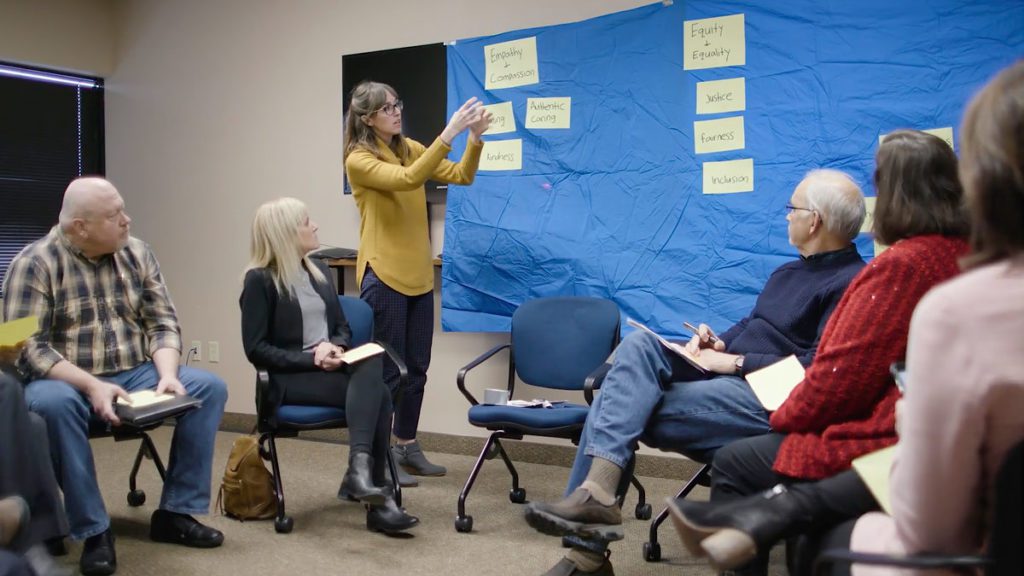Climate action plans (CAPs) traditionally rely on data and statistics, but stories can breathe life into those numbers. Whether you're developing or updating a CAP, this article will guide you in enhancing your plan by integrating storytelling to make it more impactful and inclusive.
Table of Contents
Storytelling Is Missing from Your Climate Action Plans
Storytelling is a powerful tool for CAPs because it connects scientific data to human experiences, making the complex issue of climate change more relatable and urgent. By weaving personal narratives into climate communication, storytelling can enhance public awareness, civic engagement, and empathy, which are crucial for driving meaningful action against climate change (Buffett Institute) (MIT Technology Review).
The power of storytelling lies in its ability to:
- Connect emotionally: Facts can inform, but stories resonate, sparking empathy for those impacted.
- Showcase solutions: Stories highlight existing solutions and success stories, inspiring action.
- Build community: Shared stories create a sense of solidarity and purpose.
7 Ways to Add Storytelling to Climate Action Plans
The following climate action framework steps are borrowed from the guide, How to Center Racial Justice in Your Climate Action Planning.
Awareness and Understanding

Framework Steps
Climate change isn't just an environmental issue; it's a social justice issue, hitting BIPOC communities hardest.
Storytelling Lens
Take your audience on an emotional journey. Share first-hand accounts that spotlight the systemic inequities heightened by climate change.
Example
Include a story from a community member who has experienced the direct impact of climate change. This makes the issue more relatable and urgent. For instance, Oregon's Storytelling Project by the Oregon Health Authority uses community listening sessions to gather and share personal stories about climate change impacts, building empathy and understanding
Equity Assessment

Framework Step
Evaluate the fairness of your current plans. Consider their real-world impacts on marginalized communities.
Storytelling Lens
Use stories that reveal harsh truths about the costs of inequitable initiatives. Turn abstract assessments into emotional journeys.
Checklist
- Are we considering the voices of marginalized communities?
- Have we highlighted stories that show the real-world impact of our plans?
Resource
Use resources like 350.org's Climate Storytelling Toolkit to ensure your assessments highlight real-world impacts and showcase solutions and stories of hope.
Inclusive Engagement

Framework Step
Tap into local communities, employees, and other stakeholders to assess impacts and inform decisions.
Storytelling Lens
Share stories of community-led initiatives in your climate action plan.
Template
Create a template for collecting and sharing stories from community members involved in climate action.
Impact Measurement

Framework Step
Develop KPIs to quantify the impact on vulnerable communities. Understand the economic advantages of fair practices.
Storytelling Lens
Narrate the outcomes, not just the metrics. Show how real lives are uplifted, dispelling any frustrations related to impact ambiguity.
Visual Aid
Consider using short narratives, like APHA's Tiny Climate Chronicles, to communicate the health impacts of your initiatives clearly and concisely.
Policy Advocacy

Framework Step
Advocate for equitable clean energy transitions. Engage with policymakers in crucial regions.
Storytelling Lens
Translate stats into stories. Show how your climate action plan uplifts communities, dispelling the cloud of impact ambiguity.
Example
Share testimonials from a community that benefited from an equitable clean energy project.
Transparent Reporting

Framework Step
Publicly disclose your progress. Showcase impacts on communities through annual reports.
Storytelling Lens
Why not turn your annual report into an impact report video? Tom Shoes did when they visualized their impact in 2022.
Call to Action (CTA)
Encourage readers to watch an impact report video and consider creating their own. Also, when creating your CTA, consider what stage of the audience journey your audience resides. This will help you craft call to actions that move people to the immediate next step.
Collaboration and Partnerships

Framework Step
Partner with like-minded organizations for maximum impact. Ensure everyone is on the same page mission-wise.
Storytelling Lens
Showcase collaboration through the lens of shared values and milestones. Celebrate wins, but also share lessons learned from failures.
Template
Provide a partnership story template to highlight successful collaborations and shared goals.
No Longer the Unsung Hero for Climate Action Plans
Using storytelling in your CAP isn't just a matter of flair; it's essential. By breaking down complex issues into relatable, actionable wisdom, you spark the emotional connections that drive real-world change. Incorporating storytelling into climate action plans also empowers individuals and communities to see themselves as active participants in the solution, fostering a sense of agency and collective responsibility (GW Today, Program on Climate Change).
Effective climate storytelling requires more than individual stories. It needs a systematic infrastructure and system to collect, organize, and amplify narratives consistently.
